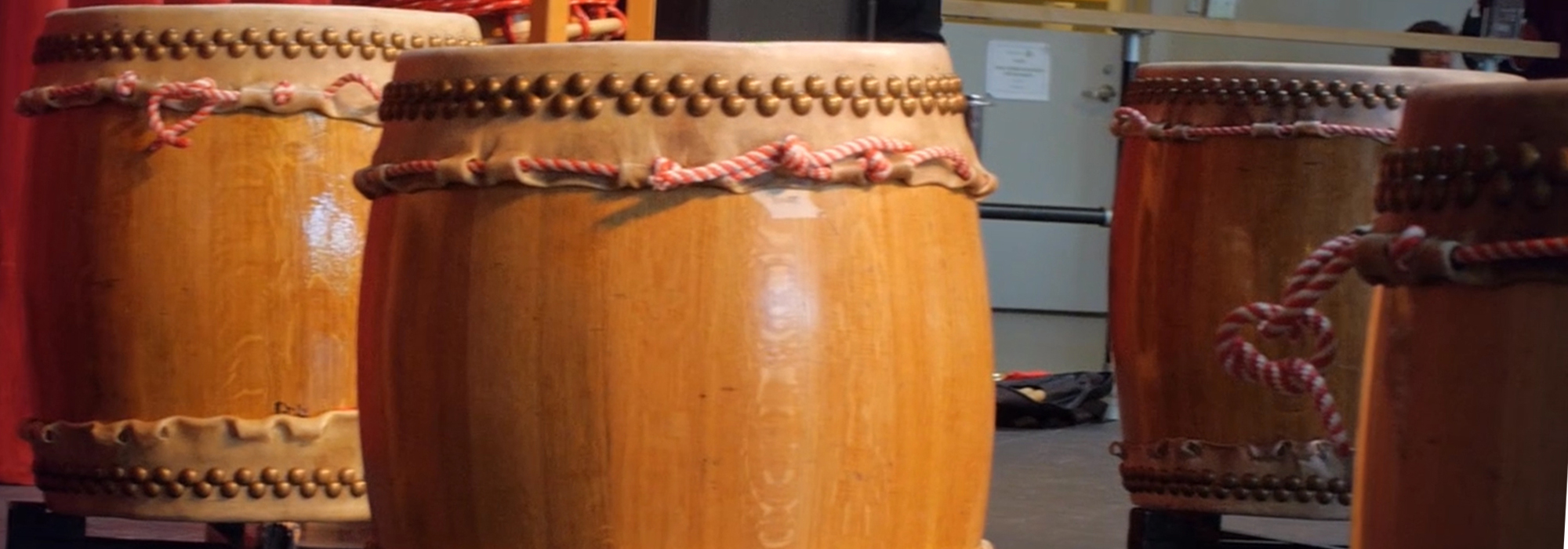Koto
The koto is a 13-stringed instrument whose sound is instantly recognizable, even to those who have never been to Japan or been to a koto performance. It is as soothing to the ears today as it was to the court nobles in ancient Japan. The koto is a six-foot long instrument made of hollowed-out paulownia wood. Originally from China, it was brought to Japan in the 11th century. Its popularity grew in the Meiji era; several schools of koto evolved and it came to be enjoyed by all classes.
The koto is distinctive from Western stringed instruments in that it is fine tuned by moving the bridges rather than by tightening the strings. Since the bridges are separate they are spread along the length of the koto to produce the range of notes. Unlike the cello or bass, the koto is set on a low stand on the floor and the musician sits on the floor in front of it.
Taiko
To most Japanese, the rhythm and beat of the taiko symbolizes the joyful atmosphere of a festival. The drum is used to catch the attention of the crowds for the procession of portable shrines, the most important elements of Shinto festivals. Taiko was also used by farmers and fishermen to drive away evil spirits and pests, or call to the heavens for rain during droughts. Rice farmers used to plant to the rhythm of the taiko drum. The recent rediscovery of taiko in both Japan and the U.S. has become a focal point in the reawakening of this cultural heritage. In Japanese-American communities, taiko players are beginning to fuse the traditional rhythms of Japan with those of the Asian-American experience. Participating taiko groups include: Seattle Kokon, Northwest Taiko, Seattle Matsuri, Kaze Daiko, and Inochi.


